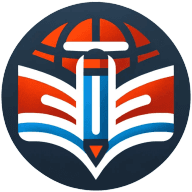8 Ways to Enhance Student Understanding by Integrating Technology with Traditional Teaching Methods
Enhancing student understanding requires a thoughtful blend of technology and traditional teaching methods, as demonstrated in this comprehensive guide. Education experts have identified key strategies that effectively bridge digital tools with classroom fundamentals to create more engaging learning environments. From collaborative screen writing to interactive whiteboards and molecular visualization tools, these practical approaches help educators make abstract concepts more accessible for today's students.
Real-Time Collaborative Screen Writing Transforms Learning
During the pandemic, I introduced collaborative screen writing into my traditional lecture format, allowing students to contribute ideas and edit content in real time. This digital approach transformed what was once a passive learning environment into an interactive space where students actively constructed knowledge together. The ability to see peers' contributions sparked deeper discussions and created a more engaging classroom culture, particularly enhancing writing skills as students could immediately apply feedback. Student comprehension improved measurably as they became creators rather than just consumers of educational content.

Interactive Whiteboards Make Abstract Concepts Tangible
One way we successfully integrated technology into a traditional teaching method is by combining step-by-step problem solving with an interactive online whiteboard. In subjects like math and science, tutors would normally demonstrate how to solve a problem on paper, but by using the digital whiteboard, students can see each step unfold in real time and interact with it themselves. They can move elements, annotate, or try similar problems directly on the board while the tutor provides guidance. Students can also go back anytime after the session to review the lesson, which helps reinforce understanding at their own pace.
This combination enhanced student understanding because it allowed abstract concepts to become visual and hands-on at the same time. Students could experiment with different approaches, get immediate feedback, and correct mistakes in a low-pressure environment. Over time, we noticed that students not only grasped concepts more quickly but also retained them longer, and they gained confidence to tackle new problems independently.

Molecular Visualization Tool Enhances Chemistry Understanding
I integrated MolView, an interactive molecule builder, into my traditional IB Chemistry teaching approach to help students visualize complex molecular concepts. This technology allowed students to rotate molecular structures in real-time and observe orbital overlaps, which significantly improved their spatial understanding of chemical compounds. The combination of traditional chemistry instruction with this interactive visualization tool created a more engaging learning environment and helped students grasp abstract concepts more concretely. Students demonstrated improved comprehension and engagement with the material after incorporating this technological enhancement.

VR Experiences Connect Students To Abstract Concepts
Virtual reality technology transports students to places and times otherwise inaccessible, creating powerful learning experiences that go beyond textbook descriptions. When students virtually walk through ancient Rome or explore the human circulatory system from inside a blood vessel, abstract concepts become concrete and memorable. The immersive nature of VR activates multiple senses, which research shows significantly improves information retention compared to traditional reading or lecture methods.
Schools can implement VR experiences even with limited budgets through simple cardboard viewers and smartphone applications that make this technology increasingly accessible. The emotional connection created through virtual reality experiences helps students develop empathy and deeper understanding of complex historical events or scientific phenomena. Explore available VR education platforms to find experiences that align with your curriculum objectives and watch student engagement soar.
Flipped Classroom Maximizes Hands-On Learning Time
Flipped classrooms allow teachers to record lessons for students to watch at home, which frees up valuable classroom time for hands-on activities. Students come prepared with basic knowledge and questions from the pre-recorded content, making face-to-face sessions more productive for deeper discussions and problem-solving. Teachers can use this approach to focus on helping students who struggle with specific concepts rather than delivering one-size-fits-all lectures.
The traditional homework becomes the classwork, giving teachers direct insight into student comprehension and allowing immediate guidance when needed. This reversal creates a more active learning environment where students take greater responsibility for their education. Consider implementing a flipped classroom model gradually, starting with one unit to see how it enhances student understanding and engagement.
Game Elements Create Low-Stress Learning Environment
Gamification introduces game elements like points, badges, and leaderboards into the learning process, making education more engaging for today's students. The immediate feedback students receive when completing game-based activities helps them understand concepts better by showing exactly where they excel or need improvement. Educational games create a low-stress environment where failure becomes part of the learning journey, encouraging students to try again rather than give up when facing challenges.
Teachers can use gamified platforms to collect data on student performance, allowing for more informed instructional decisions. The competitive yet collaborative nature of many educational games promotes both individual achievement and teamwork skills. Try incorporating simple gamification elements into your next lesson plan to boost student motivation and make learning more enjoyable.
Digital Portfolios Showcase Student Growth Journey
Digital portfolios provide students with a platform to showcase their work over time, creating a visual record of growth that static report cards cannot capture. Students develop critical thinking skills as they select which pieces to include and write reflections explaining their learning process and areas for improvement. Parents gain deeper insight into their child's educational journey through these collections, fostering more meaningful conversations about learning at home.
The process of building and maintaining digital portfolios teaches valuable digital literacy and organization skills that will serve students well in higher education and future careers. The ownership students feel over their digital collections increases motivation as they take pride in creating high-quality work worthy of inclusion in their portfolio. Start implementing digital portfolios in your classroom by choosing a simple platform and guiding students through the process of thoughtful selection and reflection.
AI Platforms Customize Education For Each Student
Adaptive learning platforms use artificial intelligence to analyze each student's strengths and weaknesses, creating truly personalized educational experiences. These systems adjust difficulty levels in real time, ensuring students are neither bored with material that's too easy nor frustrated by concepts they aren't ready to tackle. Teachers receive detailed analytics about individual and class progress, enabling them to provide targeted support where it's most needed rather than guessing where students struggle.
The technology works alongside traditional teaching methods, handling the mechanical aspects of education while freeing educators to focus on nurturing creativity, critical thinking, and social-emotional skills. Students develop greater confidence as they progress at their own pace, seeing concrete evidence of their improvement over time. Investigate which adaptive learning platforms might complement your teaching style and subject matter to help every student reach their full potential.

